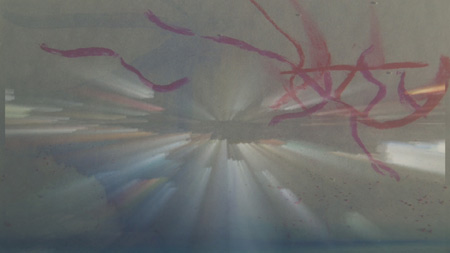
Over the past several blog entries, I’ve talked about how to approach filmmaking from a business point of view. But it’s important to remember that this is fundamentally a creative endeavor. I forget this all the time. Even my own scripts start to look like just so many widgets I’ve got to sell.
There’s absolutely nothing wrong with thinking this way – it’s good to be practical, and think of your work in terms of a larger marketplace. But it’s also important to nourish your creative side, even if you work in a non-creative capacity. Though truthfully, even assistant directors, production assistants, and line producers have to be creative when trying to solve problems. But creativity is a muscle – stop exercising it and it atrophies.
Here are some tools that I use to keep my creative muscles moving, and they’re all CHEAP! The thing to keep in mind is that these activities are meant to exercise your brain, not create masterpieces. You may come up with something brilliant, or you may make something that you wouldn’t even show your cat. The idea is that you’re learning to think differently about the world – and that’s always a good thing.
DRAWING AND PAINTING
I can’t draw very well, but I enjoy it immensely. A few years ago I picked up some colored pencils on sale at an art store, some heavy sketch paper at a stationer, and a watercolor set from Amazon.com. The whole thing cost me about $25-30 at the most. Every couple of months, I find a little quiet time and paint or draw whatever comes to mind. Sometimes it’s a character that I’m writing in my latest script. Other times it’s just a glorified doodle. The nice thing about watercolors is that I can try different techniques without spending a ton of money on brushes, paint or paper.
TAKE PHOTOGRAPHS
Taking stills is a great way to develop your eye for lighting, composition, and storytelling. Whether you use a cellphone camera or an expensive DSLR doesn’t really matter. I have a Canon Powershot 590. If you can get your hands on one of these models (or one of its successor), I recommend it. They’re bulkier than their slicker counterparts, but run on trusty AA batteries. You can go fully automatic, or control just about everything. It’s well-built, captures really great images, and only set me back about $150. It shoots video (640×480 at 20fps). The video isn’t horrible (it’s a variant of M-PJEG in an AVI wrapper) and I’ve used it on some of my shorts. The trick is to transcode it to uncompressed SD before cutting with it.
If you go Canon, download CHDK, an opensource firmware “augmenter” that loads onto the Canon’s SD card. It adds RAW support, greater shutter speed control, exposure bracketing, and other amazing features.
If you can’t afford Photoshop, get a copy of GIMP, the GNU Image Manipulation Program. This is a slick program that has much of the same functionality as Photoshop, and it’s FREE! Comes in Mac, PC and Linux flavors.
I bought a belt pouch for about $15. It makes me a look a little silly, but I’ve got my camera ready to shoot anything.
ANIMATE
There are about a hundred different ways to make animations. Instructables.com has some great tutorials on making stop-motion, cel-based, or Flash animations. The cheapest one I’ve seen so far uses a whiteboard and markers. You draw incrementally on the whiteboard and shoot one frame at a time. Don’t worry about being professional – it’s about having fun, remember?
EDIT
QuickTime Pro is a great value – for $30, you have a poor-man’s cuts-only editor and video transcoder. You can even build a sequence out of still images.
If you have a Mac, you can go with iMovie; if you have a PC, I recommend Vegas.There are several flavors (ranging in price from $75 to $600). It’s a good program, and while it looks a little strange if you’re used to Final Cut Pro or Avid, it delivers some great features at a not-so-steep price.
COMPUTER ART
I recently discovered a great PC/Mac program called ArtRage. It’s a $25 drawing/painting program that emulates natural media. It takes a little getting used to, and it helps if you have a tablet, but even with just the mouse you can create almost anything. There’s a free edition that has a limited toolset that is otherwise completely functional.
Most of the media I’ve discussed are non-temporal (with the exception of animation). As filmmakers, we’re often overly concerned with narrative and having things progress over time. I find it useful to work in non-narrative media, because it expands my thinking. Also, I don’t feel as pressured to “write the script” or get everything right. It’s all about experimentation. Most experiments fail, but I’ve learned something either directly from the attempt or through serendipity. Scientists will tell you that their failures usually led to their greatest achievements.
So now I’ve described the tools I use to keep my creative brain sharp. Sometimes the results end up in my work; more often I just file it away on my laptop or the garbage can. In the next blog I’ll show you how I used these tools on my latest short, The Prayer Tree.